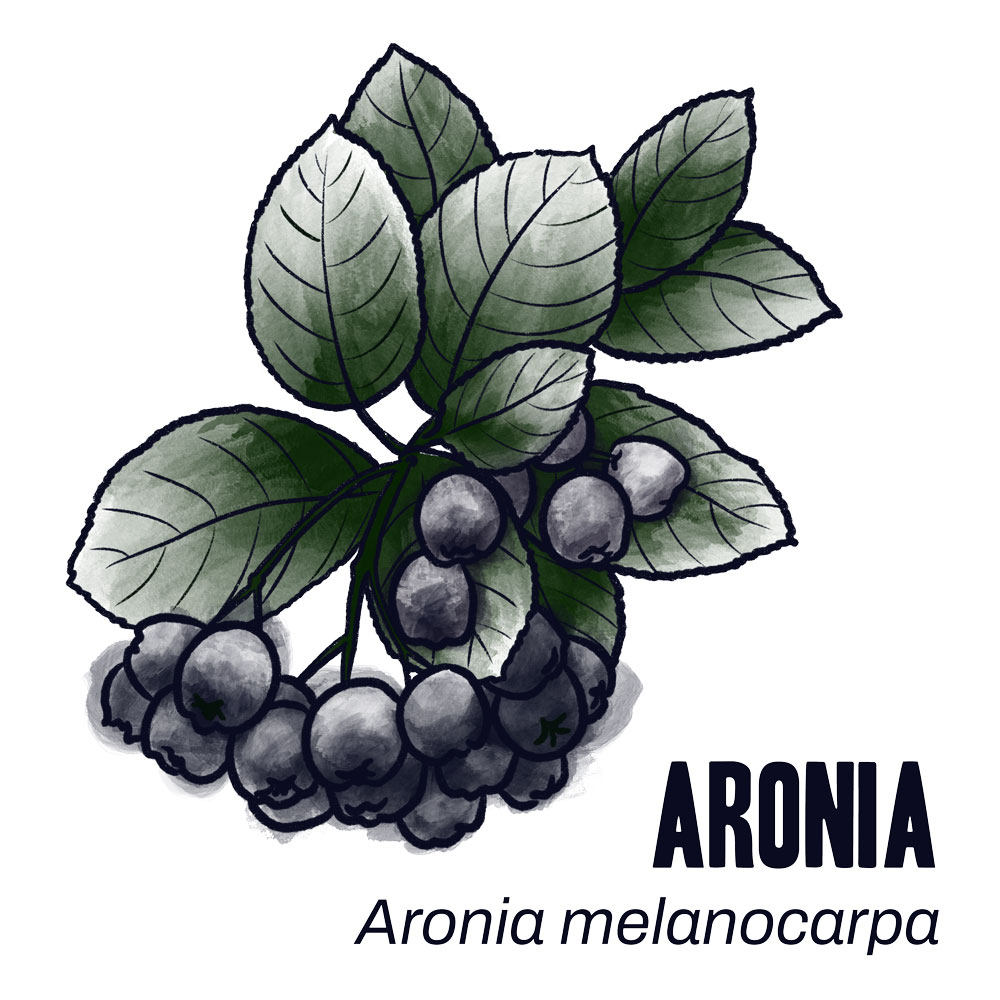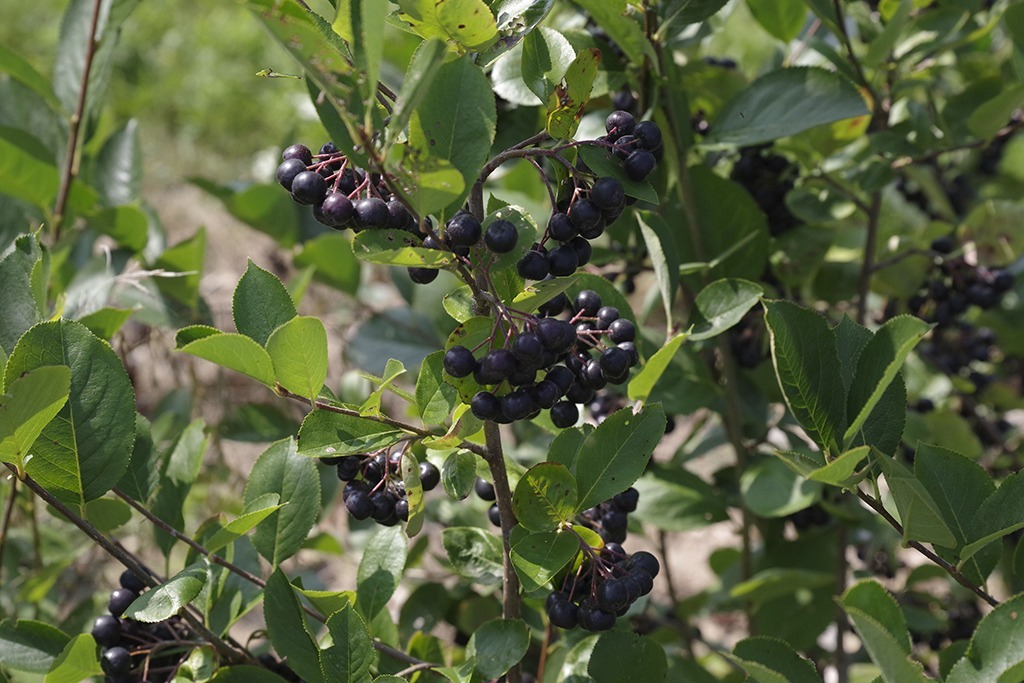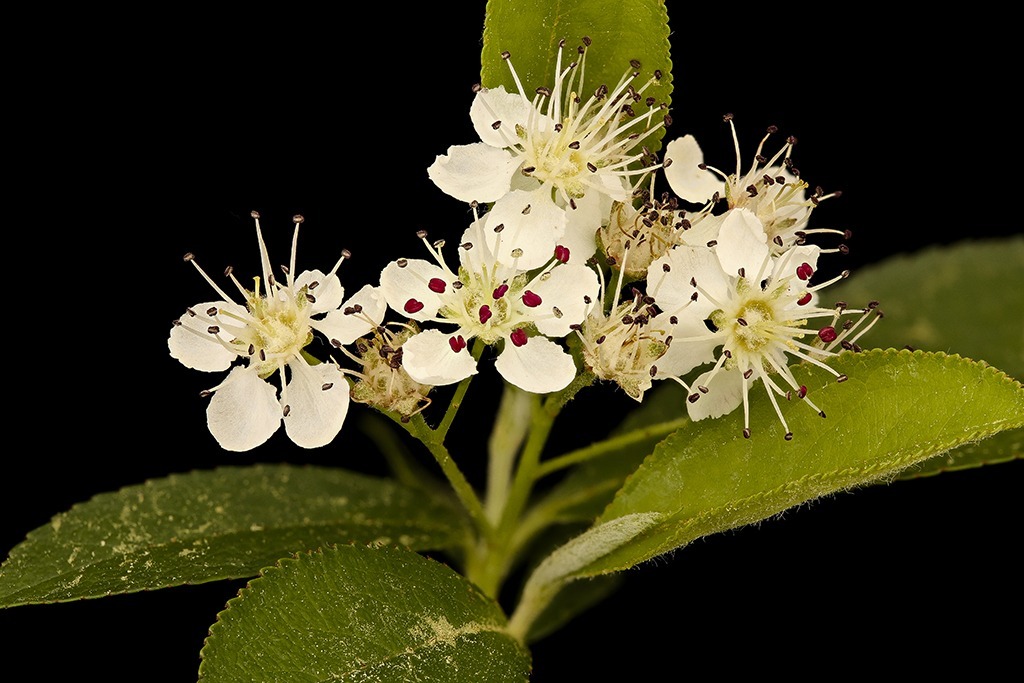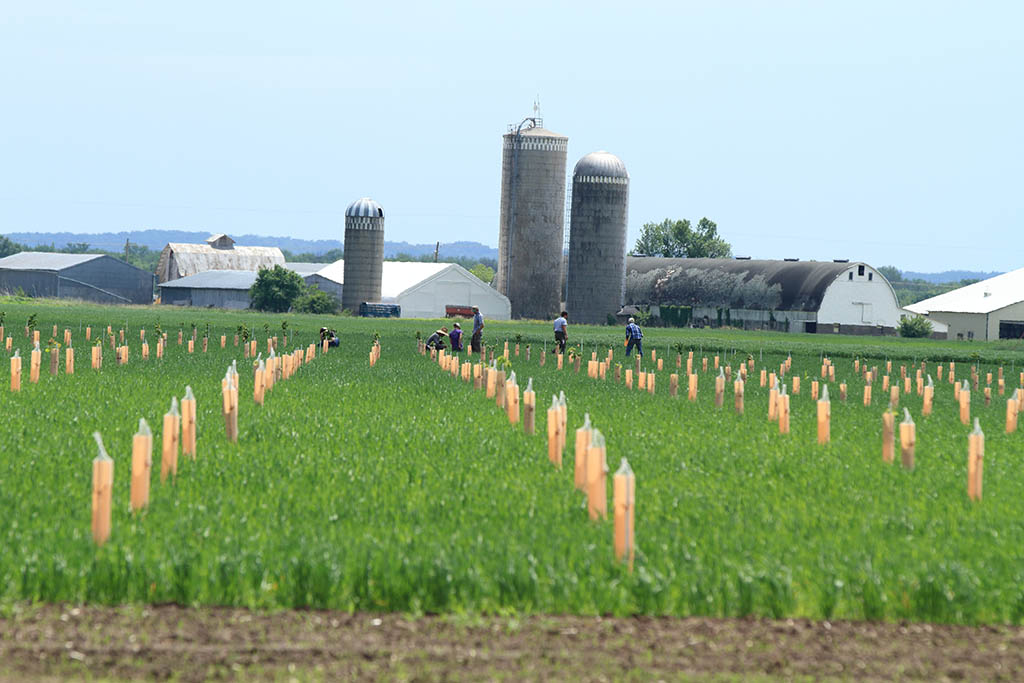
Aronia
Aronia melanocarpa
A productive native superfruit that is easy-to-grow. Also called a “chokeberry” for its astringent taste when eaten fresh, aronia is great as a vitamin-rich, natural color additive for beverages. Supply currently exceeds demand.
DRAINAGE: Moderate to well-drained soils
LIGHT: Full sun
ZONES: 3–9
SPACING: 3-4 ft in-row; 12–14 ft between rows
YEARS TO PARTIAL/FULL BEARING: 3–5
HARVEST SEASON: August–September
Opportunities
Relatively pest-free and self-fruitful—does not require planting more than one variety for pollination. Juiced, it adds bright color and healthy antioxidants to beverages and juice blends. Machine-harvestable.
Challenges
Its astringency makes aronia berry unpleasant when eaten fresh, so processing is the main market. Aronia is not commonly planted for livestock, though poultry may help to control weeds.
Management
Aronia is self-fruitful and does not require planting more than one variety for pollination. Pruning recommendations vary.
Our Research
Aronia’s productivity and slow market development has created a mismatch in supply and demand in the marketplace. Our Commercialization Program is leading investigation into markets for aronia, quality standards, and innovative products and outlets for increased sales opportunities and buyers for aronia berries.



RESOURCE
Aronia Grower Infosheet
- Review more basic grower information about plant selection and management.
- See an economics case study and find more sources for information.
- You can also print this handout to use at educational events or for outreach.


One-On-One Support for Farm Planning
Technical Assistance Program
Get help planning your perennial farm system. Our Technical Assistance Program is here to guide you through the process of planning, funding, and planting trees on your farm.

Looking For Plants?
Canopy’s Nursery offers plant material in your region. Find chestnut, walnut, pecan, hazelnut, heartnut, persimmon, pawpaw, black currant, and elderberry for order in their online store. Not only does Canopy increase the availability of high-quality plant material in the region, it also donates part of its proceeds to Savanna Institute’s nonprofit research and education mission.

